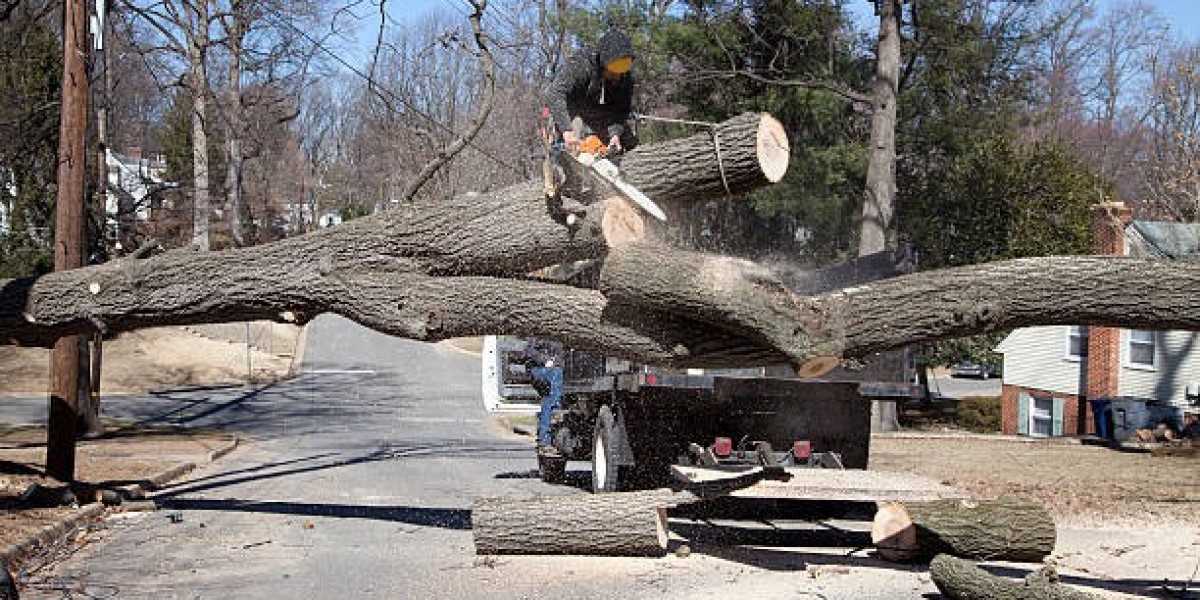Trees add immense beauty, value, and environmental benefits to our landscapes. However, there are times when a tree poses more of a threat than a benefit. A tree that is damaged, diseased, or precariously located can become a hazard, risking property damage, personal injury, and even loss of life. This is where dangerous tree removal becomes a crucial task. In this blog, we will explore the key aspects of dangerous tree removal, including when it’s necessary, how to handle it safely, and why professional help is often essential.
Signs That a Tree May Be Dangerous
Recognizing the warning signs of a hazardous tree is the first step in addressing the issue. Here are some indicators that a tree might need to be removed:
Leaning Structure: If a tree is leaning significantly, especially if the lean has developed suddenly, it may indicate root damage or instability.
Dead or Decaying Wood: Branches that are brittle, hollow, or show signs of rot can fall unexpectedly.
Cracks and Splits: Large cracks in the trunk or major branches can compromise the tree’s structural integrity.
Root Damage: Exposed or damaged roots, or soil heaving around the base of the tree, suggest the tree is losing its grip on the ground.
Fungal Growth: Mushrooms or fungi growing at the base of a tree often indicate internal decay.
Proximity to Structures or Power Lines: Trees that grow too close to homes, fences, or electrical lines pose a significant risk during storms or high winds.
Why Dangerous Tree Removal Should Not Be a DIY Project
While it might be tempting to save money by removing a hazardous tree yourself, this task is fraught with risks. Here are some reasons why hiring professionals is advisable:
Safety Risks: Tree removal involves working at heights, handling heavy equipment, and dealing with unpredictable forces. A single misstep can result in severe injuries.
Complex Tools and Techniques: Professionals use specialized equipment, such as chainsaws, cranes, and ropes, to ensure safe and efficient removal.
Experience Matters: Certified arborists and tree removal experts have the training to assess the situation and plan the removal process, minimizing risks.
Legal and Environmental Concerns: Local regulations may restrict tree removal, and improper techniques can damage surrounding landscapes or harm wildlife habitats.
The Tree Removal Process
Here’s a breakdown of what happens during a typical dangerous tree removal:
Assessment: The tree removal team evaluates the tree’s condition, its surroundings, and potential hazards.
Preparation: Safety measures, such as clearing the area and setting up barriers, are put in place.
Branch Removal: Large branches are carefully removed to reduce the tree’s weight and make it easier to control during the removal.
Trunk Removal: The trunk is cut into manageable sections and safely lowered to the ground.
Stump Removal (Optional): The stump may be ground down or removed entirely, depending on the homeowner’s preferences.
Cleanup: The debris is cleared away, leaving the site clean and hazard-free.
Preventative Measures to Avoid Dangerous Situations
Prevention is always better than remediation. Here are some tips to keep your trees healthy and reduce the risk of future hazards:
Regular Inspections: Have a certified arborist inspect your trees periodically for signs of disease or structural issues.
Prune Wisely: Proper pruning ensures that branches grow in a balanced, stable manner.
Avoid Construction Damage: Protect tree roots during construction projects to prevent long-term damage.
Address Issues Early: If you notice signs of trouble, such as cracks or leaning, take action promptly.
Choosing the Right Tree Removal Service
When selecting a professional tree removal company, consider the following:
Certifications: Look for companies with certified arborists who have the expertise to handle dangerous tree removal.
Insurance Coverage: Ensure the company is fully insured to protect against potential liabilities.
Reputation: Check online reviews and ask for references to gauge the company’s reliability.
Cost Estimates: Obtain multiple quotes to compare prices and services, but avoid choosing solely based on the lowest price.
Conclusion
Dangerous tree removal is a task that requires skill, precision, and a commitment to safety. While it may seem daunting, addressing a hazardous tree promptly can prevent significant harm to people and property. By working with experienced professionals and taking proactive measures to maintain your trees, you can enjoy the benefits of a beautiful, safe, and healthy landscape.









